In a world where technology often dominates our lives, the allure of remote camping destinations offers a refreshing escape. These secluded spots provide not only a break from the digital world but also an opportunity to reconnect with nature in its purest form. Here are seven of the world’s most thrilling, remote camping destinations that promise adventure, tranquillity, and unforgettable experiences.
Torres del Paine National Park, Chile
Nestled in the heart of Patagonia, Torres del Paine National Park is a haven for adventurers. Its dramatic landscapes, featuring towering granite peaks, azure lakes, and sprawling glaciers, create a surreal backdrop for camping. The park’s remoteness ensures a serene experience, with the chance to spot guanacos, condors, and even pumas. The W Trek and the O Circuit are popular routes, offering a mix of challenging hikes and breathtaking scenery.
Best Time to Visit: The best time to visit Torres del Paine is during the Southern Hemisphere’s summer, from November to March. This period offers longer daylight hours and milder weather, making it ideal for trekking and camping.
Safety Tip: Weather in Patagonia can be unpredictable. Always carry appropriate gear for sudden changes, including waterproof clothing and extra layers.
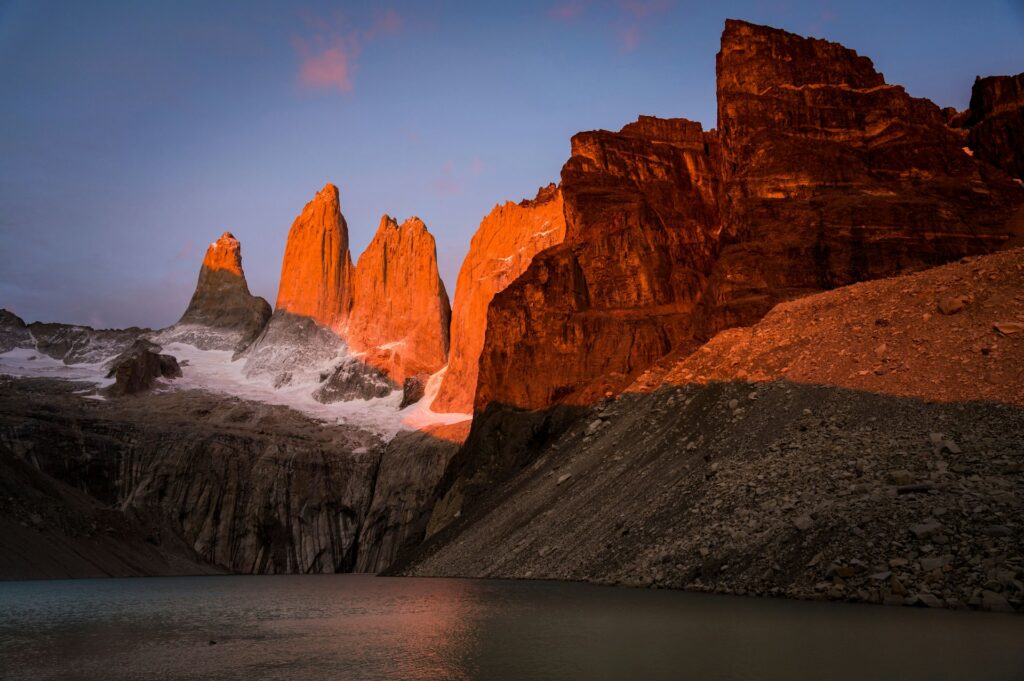
The Kimberley, Australia
The Kimberley region in Western Australia is one of the most isolated and rugged areas on the planet. With its ancient gorges, cascading waterfalls, and vast savannahs, it’s a paradise for those seeking solitude and adventure. Camping here means immersing yourself in the outback, with opportunities to explore the Bungle Bungles, swim in secluded waterholes, and witness the stunning Horizontal Falls. The remoteness of the Kimberley ensures a truly off-the-grid experience.
Best Time to Visit: The Kimberley is best visited during the dry season, from May to October. During this time, the weather is more predictable, and the temperatures are cooler, making it more comfortable for camping and exploring.
Safety Tip: The Kimberley is home to various dangerous wildlife, including crocodiles. Always camp at designated sites and follow local guidelines to avoid encounters with these animals.
Read: The best coastal walks in Albany, Western Australia
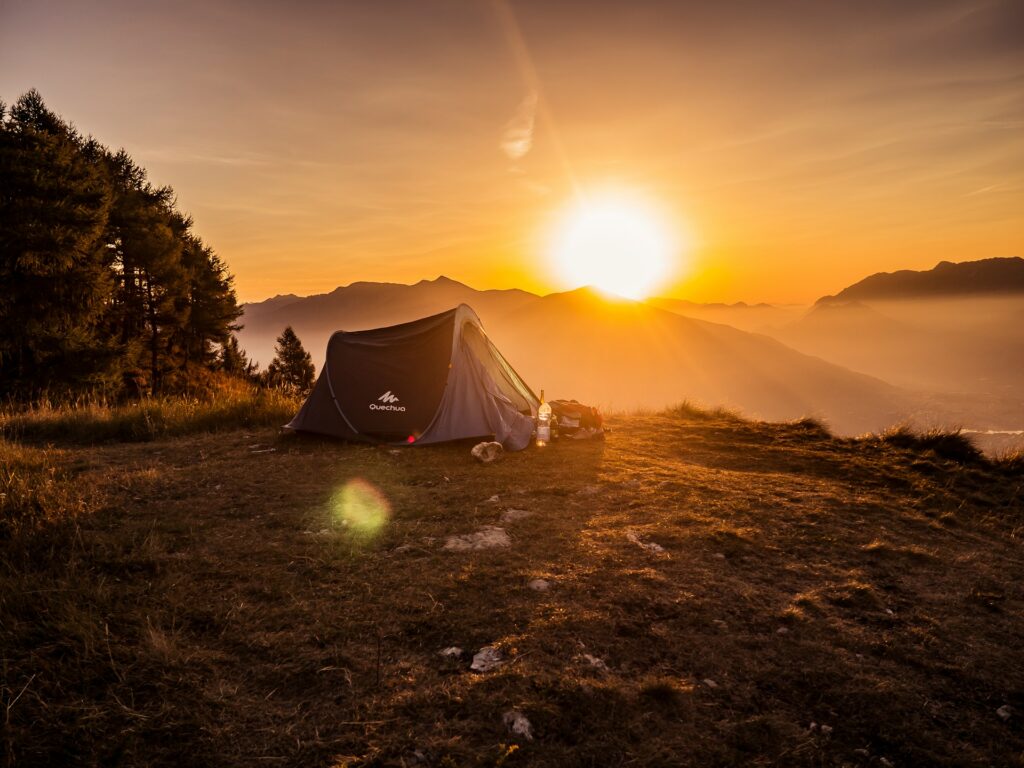
The Altai Mountains, Mongolia
The Altai Mountains, straddling the borders of Mongolia, China, Russia, and Kazakhstan, offer a remote and rugged camping experience. This region is characterised by its snow-capped peaks, vast steppes, and crystal-clear lakes. Camping in the Altai means immersing yourself in a landscape that has remained largely unchanged for centuries. The area is home to the Kazakh eagle hunters, and you may have the chance to witness their traditional way of life. The remoteness of the Altai Mountains ensures a truly off-the-beaten-path adventure.
Best Time to Visit: The best time to visit the Altai Mountains is from June to September. During these months, the weather is warmer and more stable, making it ideal for camping and exploring the rugged terrain.
Safety Tip: The Altai region is remote and medical facilities are scarce. Always carry a comprehensive camping survival kit and ensure you have a reliable means of communication in case of emergencies.

Denali National Park, Alaska, USA
Denali National Park, home to North America’s highest peak (referred interchangeably as Denali or Mount Mckinley), offers a wilderness experience like no other. The park’s six million acres of untamed land are a playground for outdoor enthusiasts. Camping in Denali means embracing the wild, with no designated campsites in the backcountry. Instead, you’ll find your own spot amidst the tundra, forests, and rivers. The chance to see grizzly bears, moose, and wolves in their natural habitat adds to the thrill of this remote destination.
Best Time to Visit: The optimal time to visit Denali is from late May to early September. This period offers the best weather conditions, with warmer temperatures and longer days, providing ample opportunity for wildlife viewing and hiking. In the winter, seekers of an even more extreme camping experience can scale Mount Mckinley, setting up their tents at the mountain’s snowy peaks.
Safety Tip: Bear encounters are a real risk in Denali. Always carry bear spray, store food properly, and make noise while hiking to avoid surprising any wildlife.
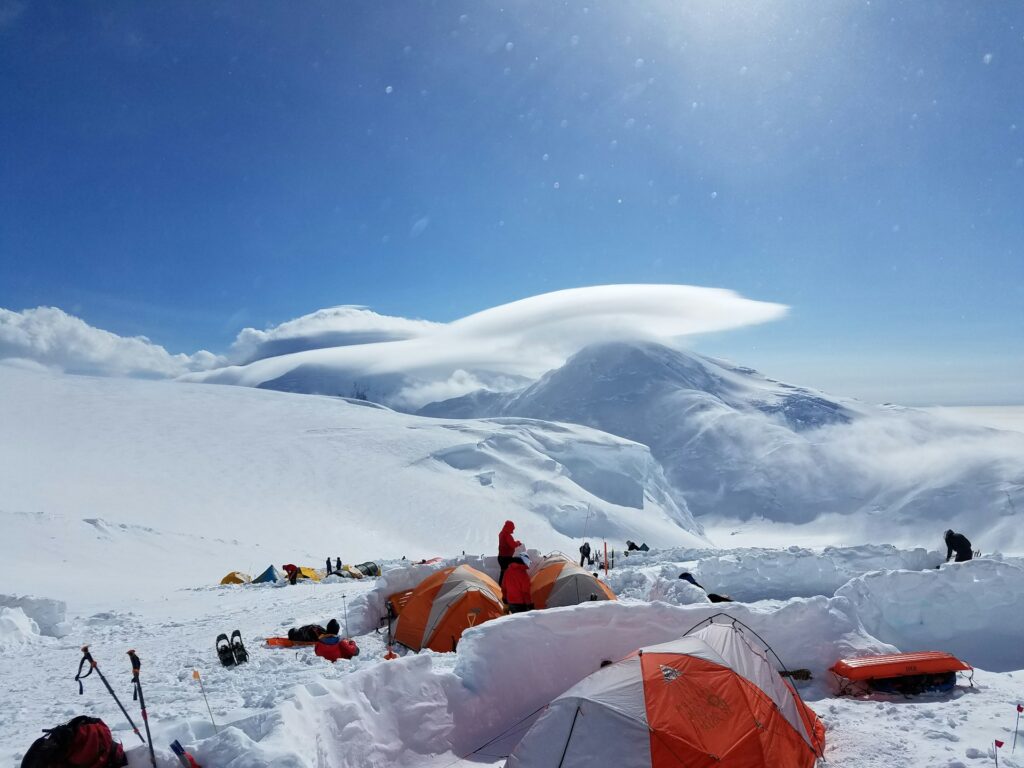
Svalbard, Norway
For those seeking an Arctic adventure, Svalbard is the ultimate destination. Located halfway between mainland Norway and the North Pole, this archipelago offers a unique camping experience. The stark, icy landscapes, with their glaciers and fjords, are home to polar bears, reindeer, and Arctic foxes. Camping in Svalbard requires careful planning and respect for the environment, but the reward is an unparalleled sense of isolation and the chance to witness the Northern Lights.
Best Time to Visit: For a chance to see the Northern Lights, visit Svalbard between October and February. However, for milder weather and the midnight sun, the best time is from May to September.
Safety Tip: Polar bears are a significant threat in Svalbard. Always camp with a group, carry a firearm for protection, and set up a polar bear watch system.
Read: 8 of the most popular Arctic cruise itineraries
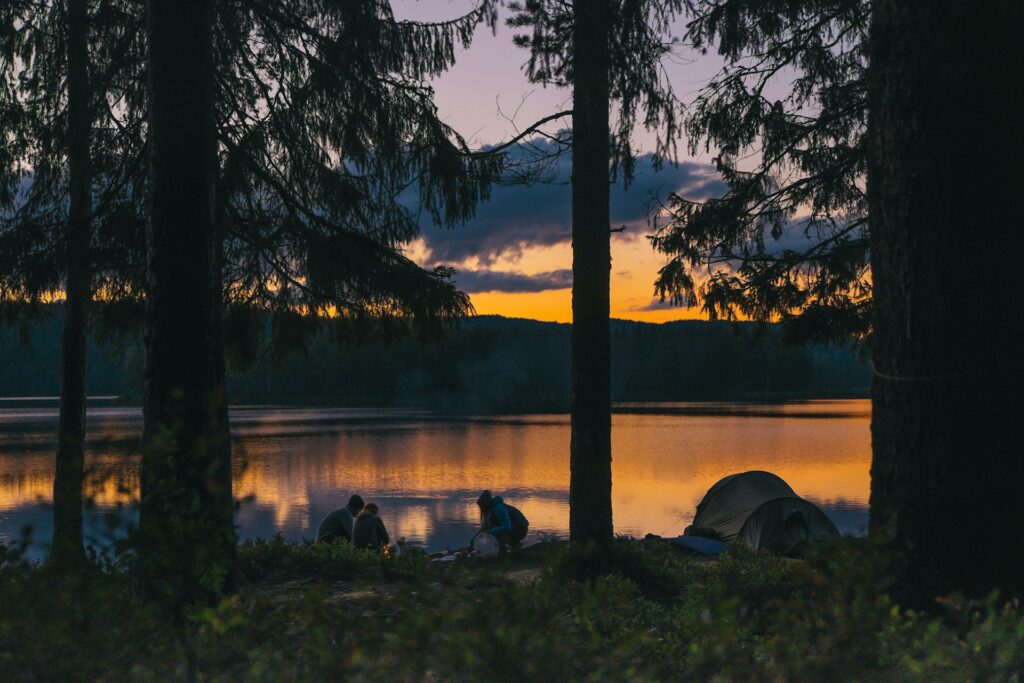
The Simien Mountains, Ethiopia
The Simien Mountains in Ethiopia are a UNESCO World Heritage site, known for their dramatic scenery and unique wildlife. Camping here means exploring jagged peaks, deep valleys, and high plateaus. The area is home to the endangered Ethiopian wolf, the gelada baboon, and the Walia ibex. The remoteness of the Simien Mountains ensures a peaceful experience, with the opportunity to trek to the summit of Ras Dashen, the highest peak in Ethiopia.
Best Time to Visit: The best time to visit the Simien Mountains is during the dry season, from October to March. This period offers clearer skies and more stable weather, ideal for trekking and camping.
Safety Tip: Altitude sickness can be a concern in the Simien Mountains. Acclimatise properly by spending a few days at higher altitudes before attempting strenuous hikes.
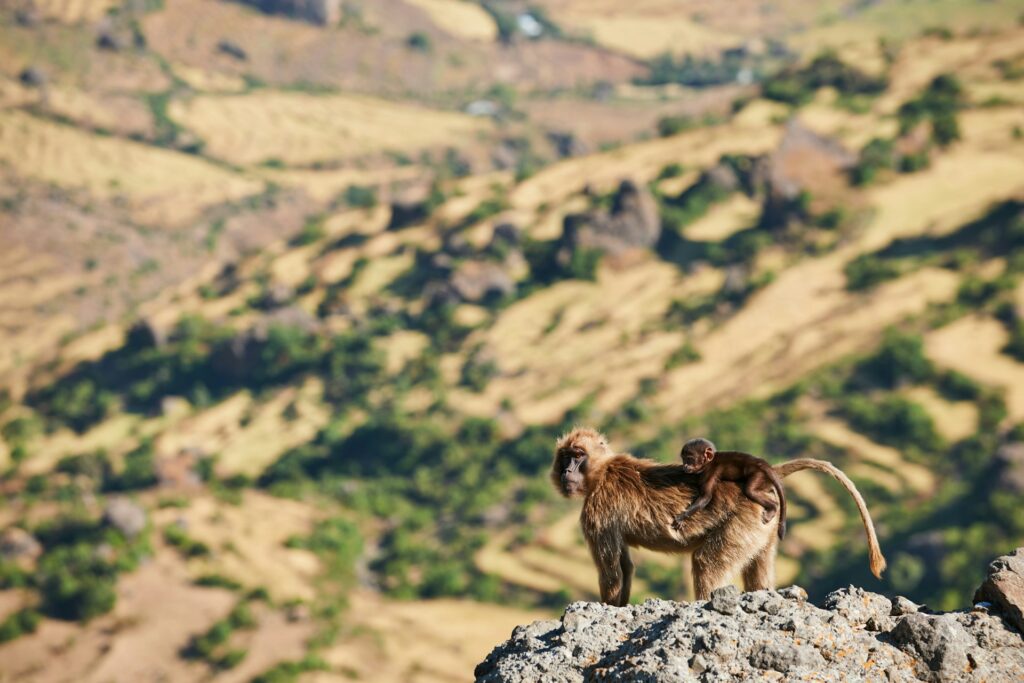
Fiordland National Park, New Zealand
Fiordland National Park, located in the southwest corner of New Zealand’s South Island, is a place of stunning natural beauty. Its remote fjords, rainforests, and alpine lakes create a magical setting for camping. The Milford Track, often described as the finest walk in the world, takes you through some of the park’s most spectacular scenery. The remoteness of Fiordland ensures a tranquil experience, with the chance to see rare bird species and enjoy the pristine wilderness.
Best Time to Visit: Fiordland is best visited during the Southern Hemisphere’s summer, from December to February. This period offers the warmest weather and the least rainfall, making it perfect for hiking and camping.
Safety Tip: Fiordland’s weather can change rapidly. Always be prepared with waterproof gear and inform someone of your travel plans before heading into the wilderness.
The Bottom Line
These seven remote camping destinations offer a chance to escape modern life’s endless, tedious grind and immerse yourself in nature’s splendour. Whether you’re trekking through the rugged landscapes of Patagonia, exploring the icy wilderness of Svalbard, or marvelling at the dramatic scenery of the Simien Mountains, each destination promises a unique and thrilling adventure. So pack your gear, embrace the wild, and embark on a journey to some of the world’s most remote and awe-inspiring camping spots.
Closer to home but no less breathtaking, check out these incredible wild camping spots in the Lake District. Gorgeous, gorgeous scenes.





